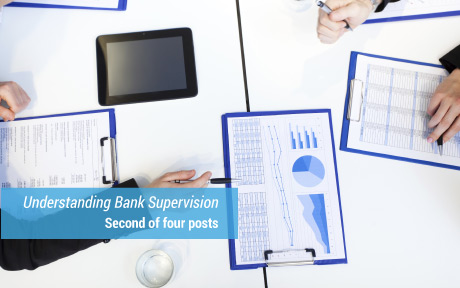What’s behind the March Spike in Treasury Fails?
Michael J. Fleming and Frank M. Keane U.S. Treasury security settlement fails—whereby market participants are unable to make delivery of securities to complete transactions—spiked in March 2016 to their highest level since the financial crisis. As noted in this post, fails delay the settlement of transactions and can therefore lead to illiquidity, create operational risk, […]
Just Released: The New York Fed Staff Forecast—April 2016
Today, the Federal Reserve Bank of New York (FRBNY) is hosting the spring meeting of its Economic Advisory Panel (EAP). As has become the custom at this meeting, the FRBNY staff is presenting its forecast for U.S. growth, inflation, and the unemployment rate. Following the presentation, members of the EAP, which consists of leading economists in academia and the private sector, are asked to critique the staff forecast. Such feedback helps the staff evaluate the assumptions and reasoning underlying its forecast as well as the forecast’s key risks. The feedback is also an important part of the forecasting process because it informs the staff’s discussions with New York Fed President William Dudley about economic conditions. In that same spirit, we are sharing a short summary of the staff forecast in this post; for more detail, see the FRBNY Staff Outlook Presentation from the EAP meeting on our website.
A Peek behind the Curtain of Bank Supervision
How Does Supervision Affect Banks?
The Economics of Bank Supervision: So Much to Do, So Little Time

Thomas M. Eisenbach, David O. Lucca, and Robert M. Townsend While bank regulation and supervision are the two main components of banking policy, the difference between them is often overlooked and the details of supervision can appear shrouded in secrecy. In this post, which is based on a recent staff report, we provide a framework […]
Just Released: Introducing the New York Fed Staff Nowcast

What is the weather today? You don’t need to be a meteorologist to answer this question. Just take a look outside the window. Macroeconomists do not have this luxury. The first official estimate of GDP this quarter will not be published until the end of July. In fact, we don’t even know what GDP was last quarter yet! But while we wait for these crucial data, we float in a sea of information on all aspects of the economy: employment, production, sales, inventories, you name it. . . . Processing this information to figure out if it is rainy or sunny out there in the economy is the bread and butter of economists on trading desks, at central banks, and in the media. Thankfully, recent advances in computational and statistical methods have led to the development of automated real-time solutions to this challenging big data problem, with an approach commonly referred to as nowcasting. This post describes how we apply these techniques here at the New York Fed to produce the FRBNY Nowcast, and what we can learn from it. It also serves as an introduction to our Nowcasting Report, which we will update weekly on our website starting this Friday, April 15.
Supervising Large, Complex Financial Institutions: Defining Objectives and Measuring Effectiveness

Last month the New York Fed held a conference on supervising large, complex financial institutions. The event featured presentations of empirical and theoretical research by economists here, commentary by academic researchers, and panel discussions with policymakers and senior supervisors. The conference was motivated by the recognition that supervision is distinct from regulation, but that the difference between them is often not well understood. The discussion focused on defining objectives for supervising the large, complex financial companies that figure so prominently in our financial system and ways of measuring how effectively supervision achieves these goals. This post summarizes the key themes from the conference and introduces the more in-depth posts that will follow in this blog series.
Just Released: U.S. Economy in a Snapshot—More Data for More Charts

We launched the U.S. Economy in a Snapshot in June 2015 to provide interested readers with a monthly update of current economic and financial developments. Combining charts and summary points, the packet covers a range of topics that include labor and financial markets, the behavior of consumers and firms, survey responses, and the global economy.
Reconciling Survey‑ and Market‑Based Expectations for the Policy Rate

In our previous post [LINK], we showed that the gap between the market-implied path for the federal funds rate and the survey-implied mean expectations for the federal funds rate from the Survey of Primary Dealers (SPD) and the Survey of Market Participants (SMP) narrowed from the December survey to the January survey.
How Do Survey‑ and Market‑Based Expectations of the Policy Rate Differ?

Over the past year, market pricing on interest rate derivatives linked to the federal funds rate have suggested a significantly lower expected path of the policy rate than responses to the New York Fed’s Survey of Primary Dealers (SPD) and Survey of Market Participants (SMP). However, this gap narrowed considerably from December 2015 to January 2016, before widening slightly at longer horizons in March. This post argues that the narrowing between December and January was mostly the result of survey respondents placing greater weight on lower rate outcomes, while the subsequent widening in February and March likely reflects an increased demand for insurance against states of the world where the policy rate remains at very low levels.












 RSS Feed
RSS Feed Follow Liberty Street Economics
Follow Liberty Street Economics